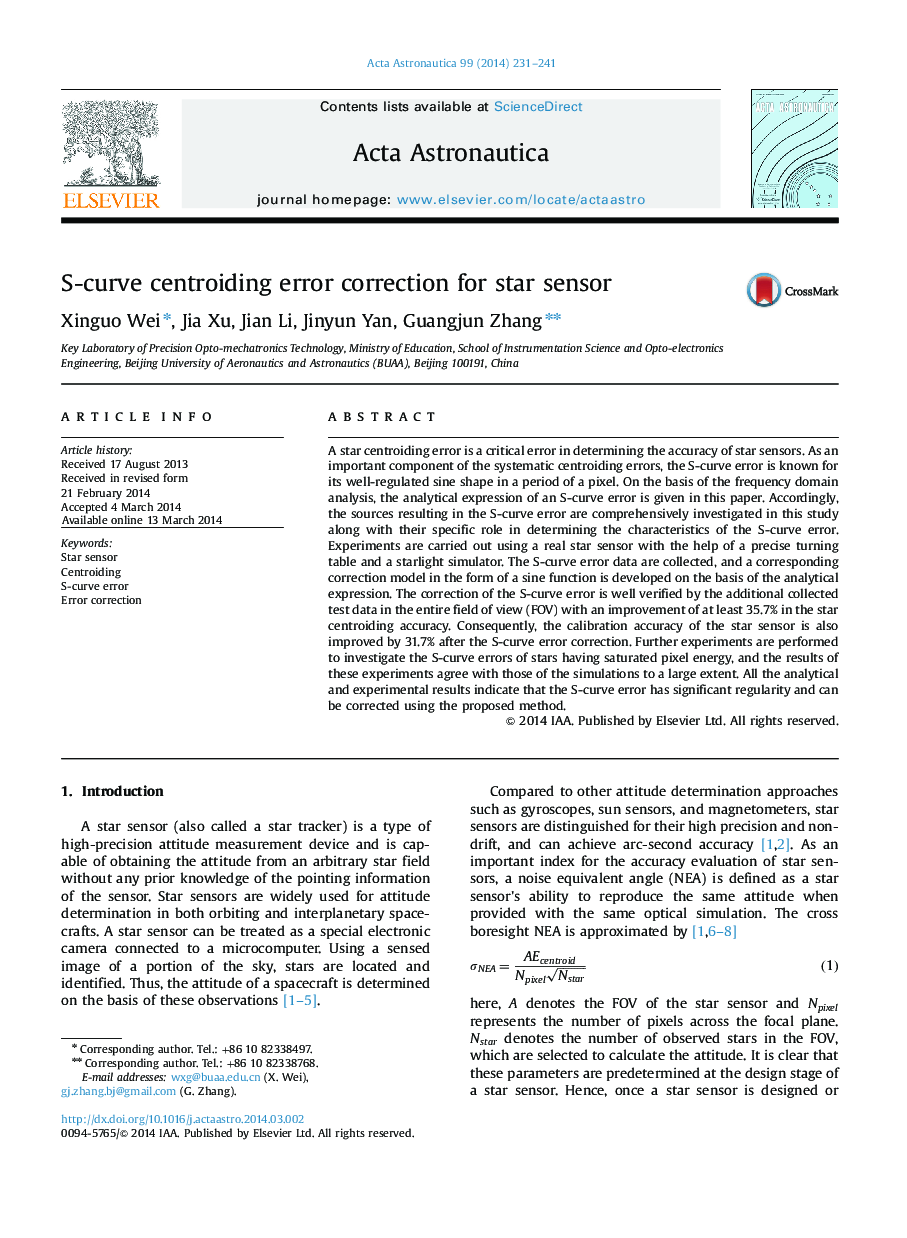| Article ID | Journal | Published Year | Pages | File Type |
|---|---|---|---|---|
| 8056978 | Acta Astronautica | 2014 | 11 Pages |
Abstract
A star centroiding error is a critical error in determining the accuracy of star sensors. As an important component of the systematic centroiding errors, the S-curve error is known for its well-regulated sine shape in a period of a pixel. On the basis of the frequency domain analysis, the analytical expression of an S-curve error is given in this paper. Accordingly, the sources resulting in the S-curve error are comprehensively investigated in this study along with their specific role in determining the characteristics of the S-curve error. Experiments are carried out using a real star sensor with the help of a precise turning table and a starlight simulator. The S-curve error data are collected, and a corresponding correction model in the form of a sine function is developed on the basis of the analytical expression. The correction of the S-curve error is well verified by the additional collected test data in the entire field of view (FOV) with an improvement of at least 35.7% in the star centroiding accuracy. Consequently, the calibration accuracy of the star sensor is also improved by 31.7% after the S-curve error correction. Further experiments are performed to investigate the S-curve errors of stars having saturated pixel energy, and the results of these experiments agree with those of the simulations to a large extent. All the analytical and experimental results indicate that the S-curve error has significant regularity and can be corrected using the proposed method.
Related Topics
Physical Sciences and Engineering
Engineering
Aerospace Engineering
Authors
Xinguo Wei, Jia Xu, Jian Li, Jinyun Yan, Guangjun Zhang,
